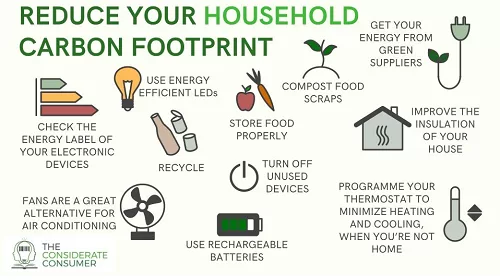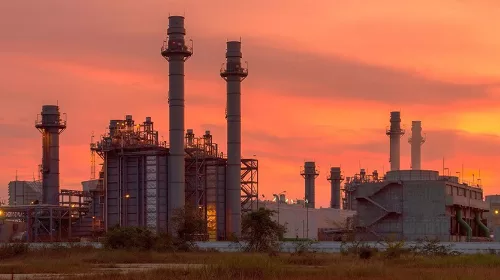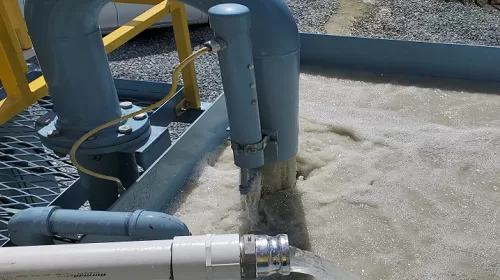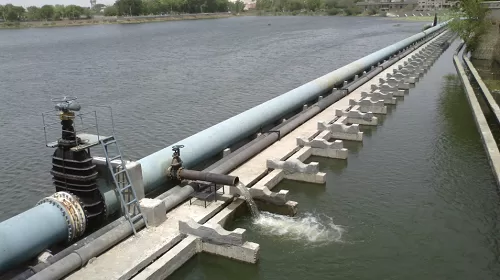In a densely populated village nestled amidst lush green fields, stands tall the two storied house of Elias Ali. It is situated in the 16 Miles village of the Beernagar-II Gram Panchayat under Kaliachak-III Block of Malda district of West Bengal. Elias Ali is 72 years old who lives with his wife and two sons and grandchildren. He is a road construction contractor by profession. His native settlement, Porandarpur Village was washed out in the erosion of river Ganges, hence he migrated to the 16 Miles village in Birnagar-II, Gram Panchayat in 1971. His family used woods and leaves of the trees as fuel for cooking and it was a burden for the women in the family. Due to long exposure to the smoke in the kitchen the women suffered from many diseases. Apart from his road contraction job, Elias also reared four cows and sold milk in the local market to add to his earnings. At present he has six cows whose milk is sold in the market to augment his family income.
ABOUT THE INITIATIVE
Elias was a visionary who believed in innovation for sustainable living. He wanted to seek more knowledge on using waste as a resource. He knew that his cows not only provide him with milk but also with valuable resource- cow dung. Instead of letting the cow dung go waste as he saw the potential wealth in it. He learnt about biogas plants and how they could convert cow dung into a clean and renewable source of energy.
In the year 1996 when the use of LPG Cylinder was becoming increasingly expensive and scarce, Elias thought of making a biogas plant in his backyard with locally available construction materials. Using his knowledge and determination, Elias Ali built the plant with the help of two construction workers from the nearby town.
Total expenditure in 1996 prices was just Rs 15,000/. The process was not easy, but Elias’s perseverance paid off when the plant started producing biogas.
THE ACHIEVEMENT
The plant is a cylindrical brick tank covered with cement blocks having passage for the cow dung to enter into the tank along with equal quantity of water. The cow dung with water resides into the tank and produces biogas. The biogas is easily obtained through plastic pipes connected within the kitchen. There is also a discharge canal to release the cow dungs into a big soak pit where the cow dungs turn into natural compost. The family use the manure for growing vegetables and fruits in the kitchen garden in their backyard. The block administration noticed this innovative practice and rewarded Mr. Ali with a Memento.
He was also rewarded a cash prize of Rs. 6,000/ by a local NGO (RDS) of 16 Miles. Now his family of 8 persons uses this biogas as fuel and it is sufficient for them. Since 1996 Elias has no need to use any fire wood or buy any LPG cylinder for cooking. This innovation of converting the waste into cooking gas was not only cost-effective, but it also reduced the carbon footprint by around 150 MT, in a conservative estimate, in the last 28 years by avoiding any firewood. Actual benefit to the environment has been more since the manure from the biogas plant has substituted chemical fertilizer.
LESSON FOR OTHERS
With each passing year, Elias’s biogas plant became more efficient, thanks to his continuous efforts to improve and optimize its performance. He experimented with different feeding ratios, temperature controls, and maintenance techniques, ensuring that his plant operated at maximum capacity. More than two decades went by, and Eilas’s biogas plant continues to thrive. Not only did it fulfill all his household cooking energy needs, but it also became a symbol of human ingenuity and success in harnessing the power of domestic waste. Elias’s story inspired many others to similar practices, leading to widespread movement towards sustainable living in the area. In the year 2024, on the 28th anniversary of his biogas plant, Elias looked back his journey with pride and satisfaction. He had not only achieved self-sufficiency but had also become a beacon of hope for future generations. And as he looked out at his flourishing farm and the smiling faces of his family and neighbours, Elias knew that his decision to embrace cow dung gas had truly been a path to success and prosperity.




